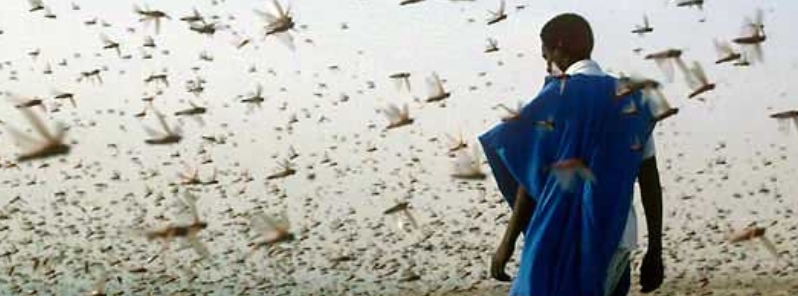25 million people may go hungry as locust plague continues in East Africa, Middle East and India

Massive swarms of locust continue to devastate huge swaths of East Africa, the Middle East, and India since January, threatening food supplies for millions. In a worst-case scenario, 5 million more people may go hungry due to the outbreak — that's on top of the 20 million that are already food insecure. The UN Food and Agriculture Organization (FAO) reported that although about 450 billion pests have been killed so far, the battle against the crop-destroying insects is far from over.
In a situation update issued by FAO on June 20, an increasing number of second-generation immature swarms is reported to have been forming in northwest Kenya.
In Sudan, no locusts are present except for isolated adults in the Nile Valley. If the rains are lacking, the invading swarms may continue to eastern Chad and migrate across the Sahel of West Africa.
Control operations are ongoing in Ethiopia and parts of Somalia. In Saudi Arabia, control operations are also in progress against hopper bands in the southwest near Najran and adult insects in the Asir Mountains.

In Yemen, hopper bands are present in the interior, and highly mobile swarms are heading highland and in the southern coastal areas. Some of the swarms may migrate to northern Somalia and northeast Ethiopia.
In Oman, adult groups and a few swarms laid eggs in the Dhofar hills. Meanwhile, in Southwest Asia, breeding has ended in southern Iran and southwest Pakistan where locust infestations are declining due to control operations along the Indo-Pakistan border.
However, spring-bred adult groups and swarms continue to appear along the border, many of which have continued further east into several states of northern India as monsoon rains have not yet arrived in Rajasthan.


The infestations are forecast to return to Rajasthan with the onset of rains to rapidly mature and lay eggs.
FAO remarked that Sudan, Ethiopia, South Sudan, Pakistan, and India should remain on high alert in the next four weeks, while West Africa should continue taking proactive measures.
Without intervention, locusts may leave millions of people in 23 countries to go hungry by December this year.
In a worst-case scenario, FAO noted that an additional 5 million people will go hungry because of the infestations– this is on top of the 20 million that are already food insecure.


"It's about 450 billion insects that we killed since the beginning of the year," said Cyril Ferrand, FAO's head of resilience team in East Africa, pointing out that authorities managed to contain the insects by spraying pesticides.
However, funding only goes until the end of August, so continuous aid is necessary to keep the swarms contained. "There is a real risk here that all our efforts since January are in vain," he added.
FAO’s locust forecasting expert Keith Cressman told The Guardian that the weather will greatly affect how long the crisis continues, and which countries will be impacted.
"It’s not a problem that starts in one place and ends in one place, it’s a rolling emergency."
Featured image credit: SteHan Botha/Flickr

This is only the begining of the global food shortage to come? Geo-engineering (Ai weather wars) and solar cooling have damaged global weather beyond repair? Even food in underground and in solid greenhouses will be effected adversely? The new dollar…nutritious food and clean drinking water?